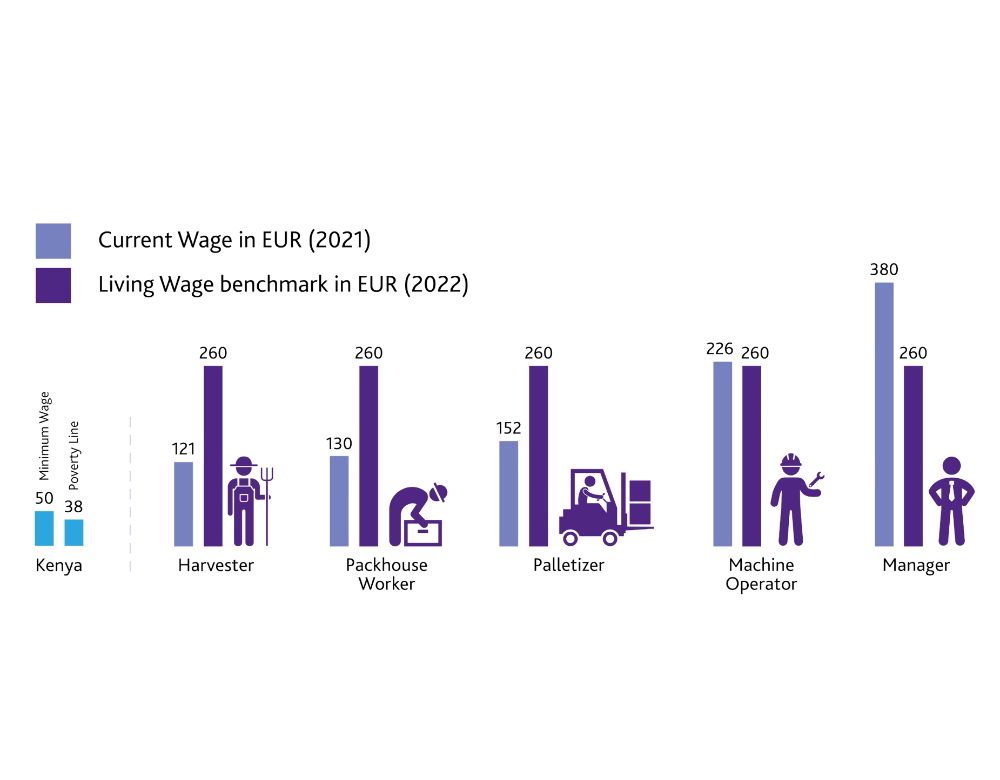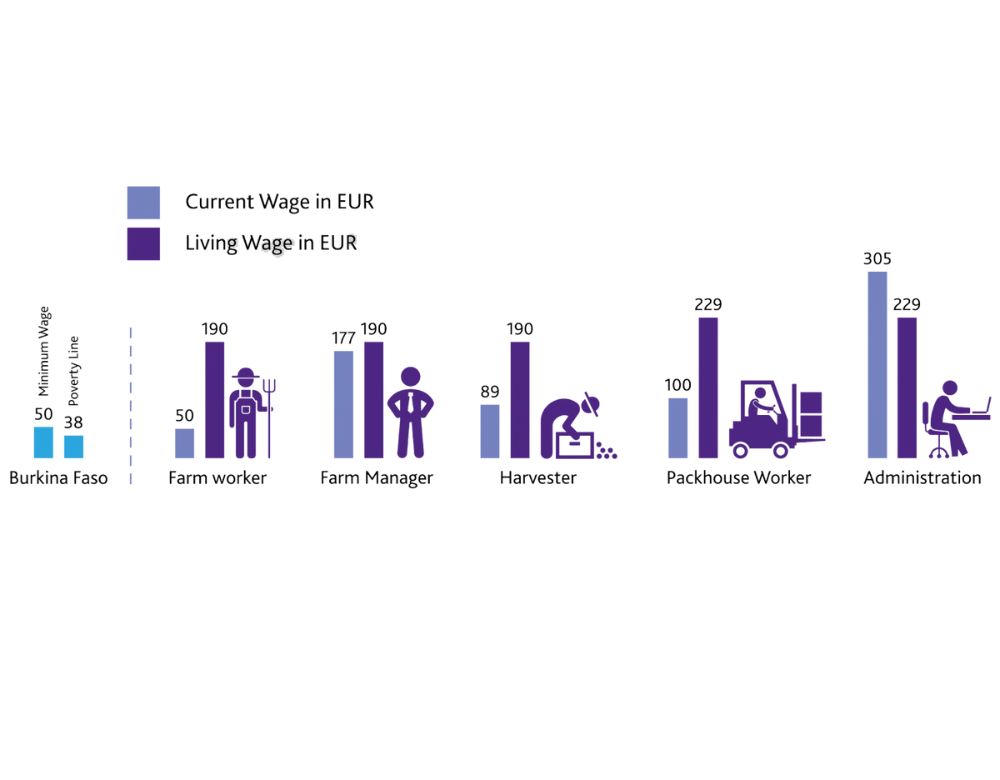The Sustainability Flower
The Sustainability Flower is the core of our business. Every Nature & More grower has a personal Sustainability Flower. It points the way to a greener and more social economy. More info here.

For many years, we have been doing business with our Mango grower Zongo in Burkina Faso and with our Avocado Supplier Anthony in Kenya. Their mangoes and avocados are not only good for your health, they also support the livelihoods of their workers. If you buy these mangoes and avocados, you join us on our journey to support better income for workers that worked the field and packed the fruit. Our Living Wage assessment shows that it costs 10 eurocents per kg of Mango fruit and 2 eurocents per avocado to increase wages to Living Wage level. So that's what we do.
Anthony from Kenya is one of Eosta’s main avocado suppliers. Together with a group of local farmers he grows, sorts and packs organic avocados. If you buy these avocados, you directly support better income for the workers that packed the fruit. Our Living Wage assessment shows that it costs only 0.02 EUR per kg of avocados to increase the wages to Living Wage level. Click here to learn more about Living Wage avocados.
A real Living Wage thanks to organic Nature & More avocados
Phyllis Mugo (40), a single mother of four children, works in the warehouse of Mavuno in Nairobi, where she packs avocados into boxes. She lives in a single-room house with her four children and feels that she is neither prosperous nor poor. Her wage enables her to pay her rent, food bill and school fees, but then there is very little left over. However, since this Spring she has had two new dreams: opening a grocery store and buying a plot of land where she can build her own home. This is because she recently started receiving a real Living Wage.
First of all we have assessed the Living Wage gap at the grower. We collected data for each category of workers: farm workers, harvest workers, people working in the packing house and office personnel. Click here for the full assessment report.
In the infographs below you find the results of Fruiteq & Mavuno, the legal minimum wage and the official Poverty Line, as determined by the World Bank. Above the Poverty Line a person in Burkina Faso is considered to have a lower middle income. In 2018, 38% of the population was still below this threshold.
Fruiteq:

Mavuno:

With this information, we are able to make the calculations. The mango will have a premium of 0.10 EUR/Kg, the avocado 0.02 EUR/kg, equal to the gap calculated in our assessment.
For Fruiteq, part of the strategy is to create access to micro-finance services so people can develop their own businesses. In Kenia the workers receive a Living Wage premium on their payslip.
Eosta / Nature & More offers its customers the opportunity to buy Living Wage-inclusive mangoes and avocados.
We will report yearly on invested amount, progress and wage increases.
Zongo (Fruiteq) has done an outstanding job on creating a safe and healthy working environment for its workers. Together with Fruiteq, Eosta now takes social compliance a step further by starting to work towards a Living Wage. Click here to learn more about Living Wage mangos.
Eosta’s first Living Wage fund, for mango packers in Burkina Faso, has commenced operation
Ouattara Awa is happy: she has received microcredit to buy a high-pressure jet washer and used it to set up a car washing business to boost her family’s income. She is the breadwinner for no fewer than eleven relatives. It is impossible for people like Ouattara to obtain credit from a bank in Burkina Faso, and the interest rate is extremely high. Eosta’s organic Living Wage mangos have given her new options. The Burkina Living Wage fund was festively inaugurated on the 10th of February. Twenty of the mango supplier’s packing employees will be helped by the fund, and this number will increase every year.